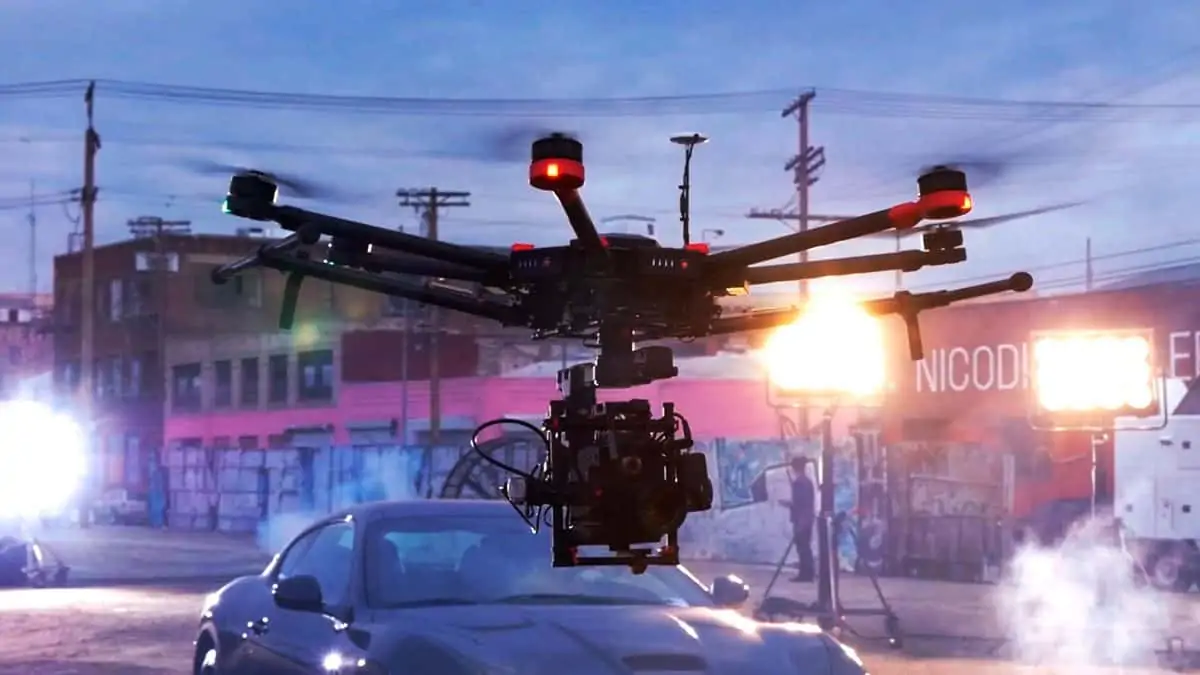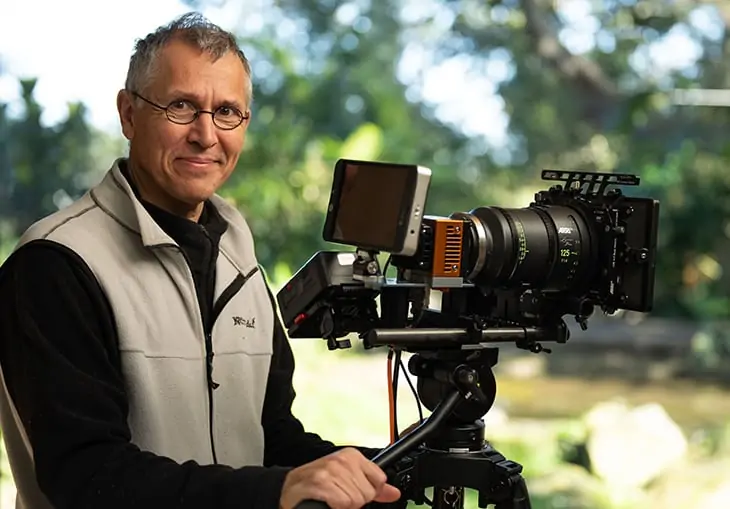Problems with modern day cinema
GBCT News / John Keedwell

Problems with modern day cinema
GBCT News / John Keedwell
Mainstream cinema seems to be entering a strange phase of its creativity. Our multiplexes are now packed with sequels and remakes and it seems filmmakers are rapidly running out of ideas. The 2016 award-winning films were somewhat diverse in nature, and some were extremely thought-provoking and had very powerful messages. Yet some other great films did not get anywhere near the attention they deserved, even though they were showing a part of history that is extremely relevant today.
One of many such examples was the film Hidden Figures, a true story set in the early 1960s about three brilliant African-American women mathematicians who had a major role in the very earliest days of NASA. Their role was pivotal in the success of the space race at the time when the USA and Russia were in the middle of the Cold War, and if the outcome was resolved in any other way than it did, the consequences could have potentially meant the end of NASA. This was a personal favourite film from last year, and it had all the elements to make it scoop more awards and success. The film had a great message, great performances that were both fun and also had a serious edge. It was a fantastic true story that was shocking on many levels, and had a genuine wow factor. Yet the film was largely passed over at the awards for some reason.
The sheer volume of fascinating true-life stories has meant more being represented in cinema in recent years. 2016 brought the following true stories: Lion, The Founder, Sully, Hacksaw Ridge, Deepwater Horizon, Race, and Denial, and there are more. In recent previous years the film Bridge Of Spies was based on the 1960 U-2 incident during the Cold War. How strange that the old conflicts, and Cold War differences between Russia and the USA, are sadly being played out for real today. Truth is stranger than fiction.
Steve Jobs, Alan Turing, Steven Hawking and many more have been represented on the big screen. The screenplay, cinematography, art department, sound design and direction all play a valuable part in any film’s success, of course, yet fundamentally the true, raw story is ultimately key to any film success. If it's a dull story it will most likely make a dull film, or not even get produced. Perhaps the way films are produced and the financial model now used means producers play safe to almost ensure a commercial success. Hence the sequels and similar genre of films being made, with a few notable films that stand out from the masses. There were two Steve Jobs films made, and they were very different in nature, so it is how the story is interpreted and produced.

It is not simply the story that has perhaps become a bit tired, it's the way films are actually made now that is both interesting and potentially frightening for conventionally produced films. Part of this is due to technology, and partly to do with the difficulty in taking a risk due to the huge film budgets we now see.
Modern day cinema is beset with its own peculiar changes due to the advances and improvement in digital technology. Who could have realistically predicted 4K-capable cameras being priced at the level they are at today? In the case of drones, for example, the entry point for quality aerial shots is now within most small film budgets. I will take a closer look at the professional uses of drones later, and their perceived production value has come with both an exciting development as well as a warning with unlicensed and unskilled operators. I hasten to add here that any commercial drone operators need to be trained and tested rigorously and have approval from the CAA before they can fly commercially.
The cost of production may come down with digital cameras and post production, and this can make film production more accessible to more filmmakers on smaller budgets. This has to be a good thing for creative newcomers who have learned their craft and who have good stories they are passionate about making. They understand pacing, tension, story, conflict and camera work and editing that blends seamlessly with the story. Yet the film then needs to be distributed and shown to as many paying people as possible to make its investment costs back and make a profit. And that is often where this business model breaks down. The film needs to be shown and that ultimately means being shown in multiplex cinemas.
The well-established multiplexes now bring in many eager customers wanting the latest blockbuster, and the layout has meant the end to a long queue in the rain, but they’re not always conducive to the very best in quality and thought-provoking cinema. It seems they are designed for the younger audiences happy with the nutritional value of a hot dog, a burger and a bucket of popcorn, all swilled down with pints of fizzy sugar and finished off with chocolates with incredibly noisy wrappers. All of this set in a room that's either so cold Nanook Of The North would actually find it chilly, or alternatively hotter than the surface of the Sun. Yet is that what cinema goers actually want?
"The multiplex is a production line. It’s designed to get you in, sell you stuff you would never normally consume, get you to watch the film, and then get you out. In many ways it has now become the worst place on Earth to watch a new movie."
John Keedwell
The multiplex cinema reflects modern day television. There are now hundreds of channels, yet there is often surprisingly little to watch. The original idea of a single building having between 10 and 30 screens devoted to showing film was great in theory. It's a bit like a supermarket. This simple idea meant it would be able to host a broad selection of diverse film programming for many different audiences. But that isn’t the case. Instead, cinema chains use this facility to make their money back for Hollywood in a shortest time period, usually in a couple of weeks. It's easy to find five screenings of the same film at staggered times throughout the day to get as many people in as quickly as possible. It's almost like view on demand, where the audience doesn't need to check the times – they can turn up and know they can watch their chosen film within 20 minutes of arrival.
The multiplex is a production line. It’s designed to get you in, sell you stuff you would never normally consume, get you to watch the film, and then get you out. There is very little feeling of love for the movies we, as a profession, strive so hard to look and sound fantastic. In many ways the multiplex has now become the worst place on Earth to watch a new movie.
Instead there is a move towards 4K-capable TVs at home, movies on-tap via the Internet, and never needing to go out into the cold and wet. Much like IMAX is framed differently at the time of shooting due to the nature of projection, and IMAX films are edited much slower than a conventional film, this may affect how we shoot films on the set, if it hasn't already. Clearly a TV production drama is often framed in a different way to a movie destined for projection in a cinema. The film set for 4K home consumption will then need to be produced and shot in an entirely different way, and that affects the operating, cinematography, sound design, costumes and editing, along with all the many departments involved in a film. This could start changing things in a huge way. I am very interested in your thoughts on that one...

Rise of the Drones
I mentioned above about the use of sophisticated camera drones and other new technologies in the production of films. The use of drones has now become a fantastic tool for filmmakers, and the full potential has not yet been realised, as there is so much more this tool is capable of. Yes, there are helicopters and Microlite aircraft fitted with gyro-stabilised cameras, and all have their place in the choice and toolbox of the cinematographer.
It is rightly compulsory to complete a recognised training course and go through many hours of training before a special permission is given to fly an unmanned aerial vehicle (UAV) for commercial purposes. The reasons are obvious, many higher-specification drones with a camera such as a RED have a weight of 20-30kg or more, and if anything were to go wrong it would cause a lot of damage to anyone below.
There is unfortunately not a day goes by when drones are in the news (for the wrong reasons). I saw today a report about closing a football field because there was a possibility of potential terrorist attacks. Clearly that needs to be addressed, yet for the law abiding technician who wants to make an honest living out of the drones by working in film and TV, mapping of land, surveying buildings for damage and a multitude of other uses, there is a huge amount of regulations we need to adhere to. This is because drones are being used in a disorganised and chaotic way with little or no regulation for amateurs. It's the professionals who have to adhere to the rules. The regulations are about to tighten up in the UK soon, but for now it is possible to buy a drone and fly it out of the box without any form of training or understanding, and many people are very unaware of the dangers in untrained hands.
I recently took a training course, and during my training at Cambridge UAV there was a great deal to learn, particularly about flight paths of other aircraft, pre-flight recces and careful planning of the location by use of specialist pilot maps, and how to gain the necessary permissions, controlling people on the ground, and much more. There are also many other considerations such as the altitude, and the surrounding terrain possibly affecting the aircraft with downdrafts, side winds, etc. A theory exam and a practical test are required to pass, along with writing a personal operations manual. More time is normally spent planning and discussing the shots, and the actual shot should be somewhat of a formality. Such is film making! It's clear a larger heavier octocopter drone with an attached RED is not a toy, and a degree of "measure twice and cut once" is needed before even thinking about pushing the throttle to take off.
It's only then you can consider working with drones for any financial gain, and when the call comes from Mr. Spielberg, you need to be experienced, extremely competent, have the right gear to hand, and be fully-knowledgeable, experienced, insured and have no alcohol in your blood. Ultimately the safety of the people below and property is paramount. With that in mind the drone can offer-up spectacular shots never before possible. Just make sure you have an experienced pilot and team with the right gear to do the job.










